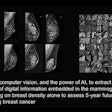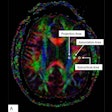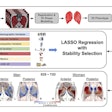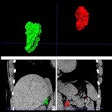Dear AuntMinnie Member,
The job market for radiologists is hot, and it's likely to stay that way for a long time to come.
That's according to a new article by Dan Corbett of physician recruiting firm Radiology Business Solutions (RBS). RBS has been tracking job postings since 2016, and what it's found has intriguing implications for any radiologist looking to make a move in today's market.
RBS has seen a spike in new openings for radiologists that began in early 2017 and has continued to now -- a welcome relief from the "job drought" for radiologists from 2010 to 2015. In fact, Mr. Corbett believes a shortage of radiologists could actually be looming, as many radiologists in their 60s and 70s are retiring.
At perhaps the other end of the scale is a story about Walmart's entry into providing healthcare services with the opening of a second clinic attached to one of its superstores in Georgia. The clinic includes basic imaging services like x-rays. Stayed tuned to see how this story develops.
Get these stories and more in our Imaging Leaders Community.
CT for coronavirus
The ongoing story about the coronavirus outbreak in China continues to evolve at a rapid pace, with several stories breaking this week.
One of the most important developments was the announcement by health officials in Hubei province -- which includes Wuhan, the epicenter of the outbreak -- that they would include cases diagnosed with CT in the official tally of individuals who are infected with the virus and have coronavirus disease (COVID-19). The change led to an immediate sharp spike in the official count of individuals infected with coronavirus, although it doesn't necessarily mean that the rate of infections is accelerating.
In related news, Chinese researchers said that chest CT was able to detect some cases of COVID-19 even when initial DNA tests were negative.
And also in the realm of CT, German researchers found that risk prediction models worked better than established clinical guidelines for differentiating benign from malignant nodules.
Check back in our CT Community for more stories about the ever-changing world of computed tomography.



















